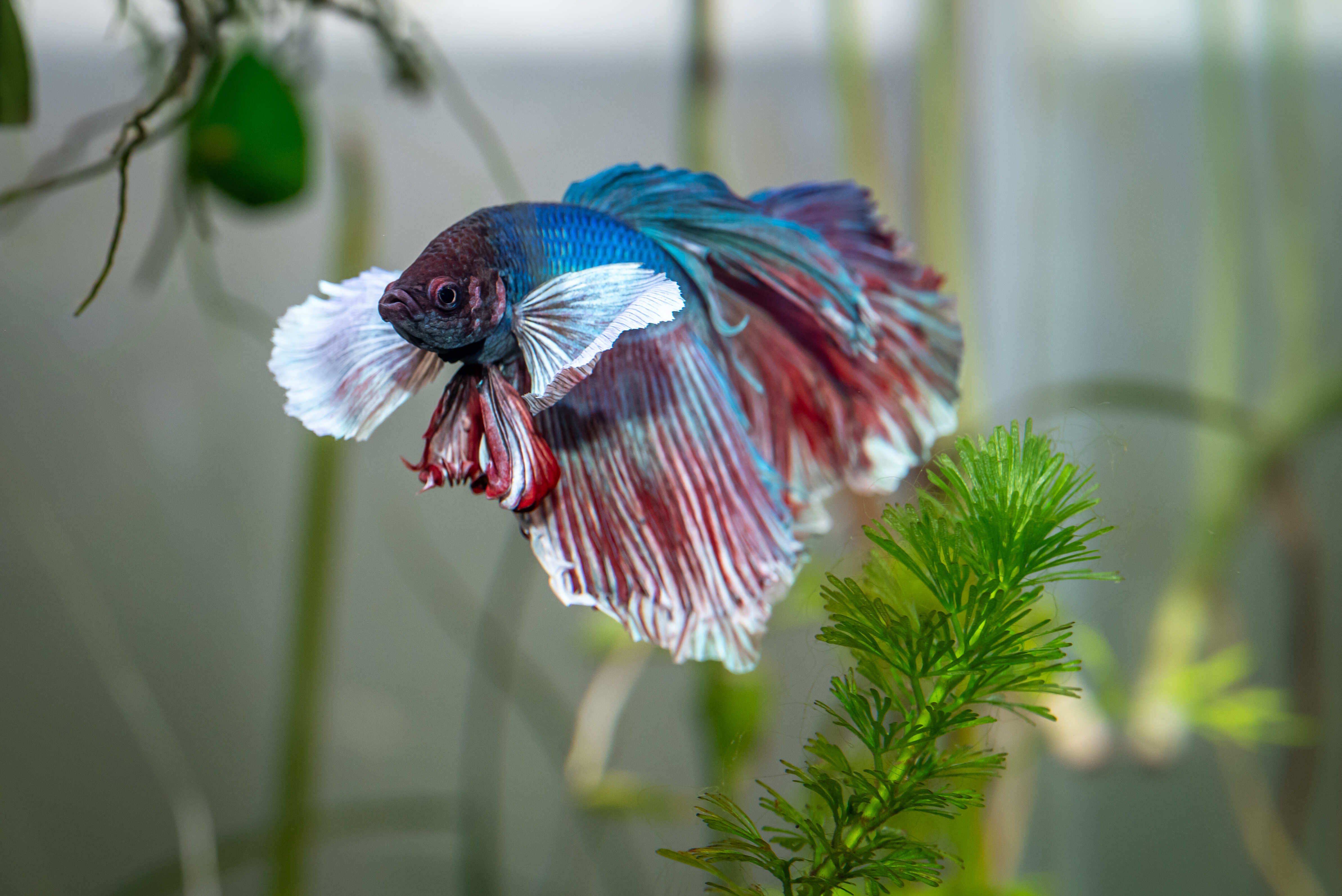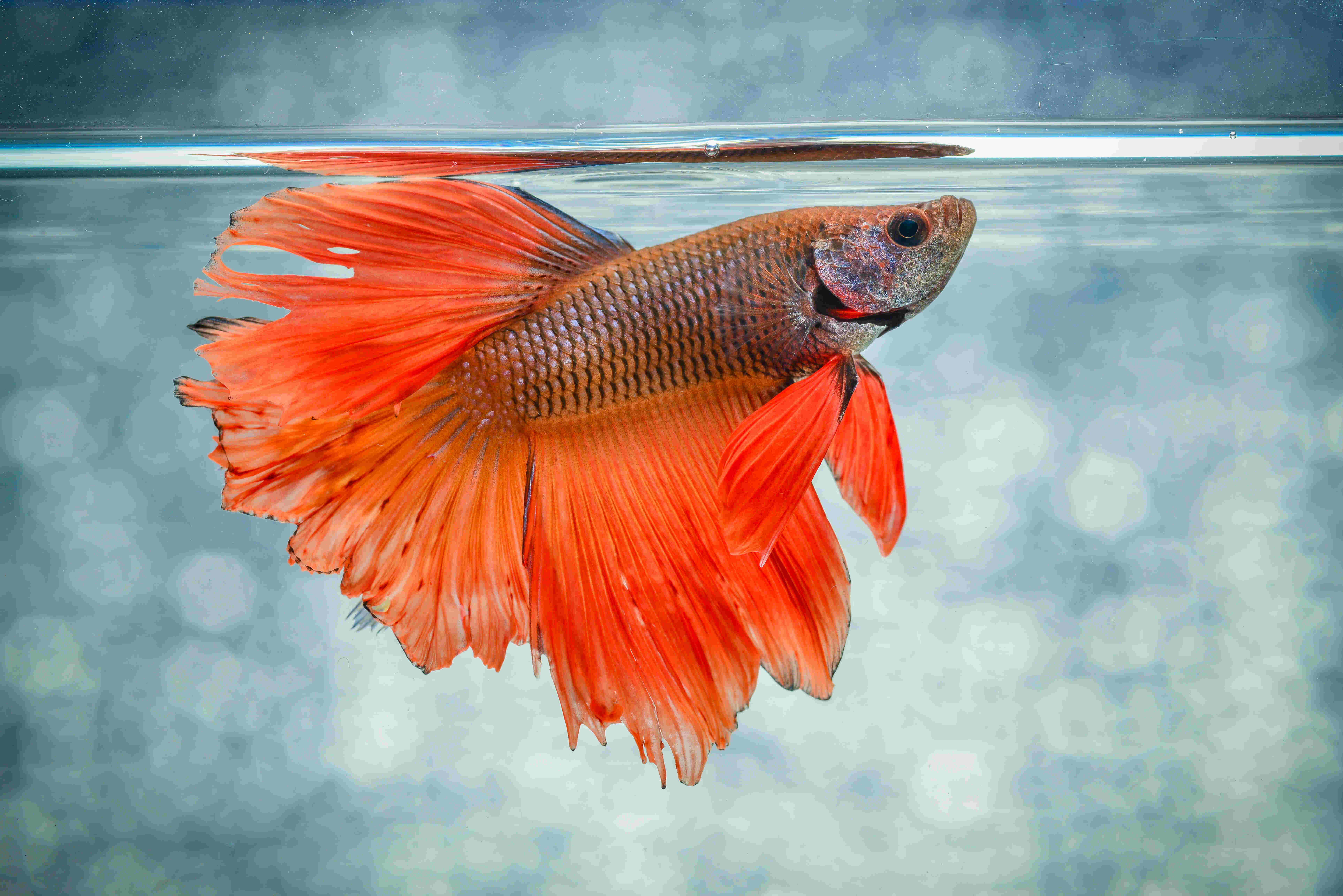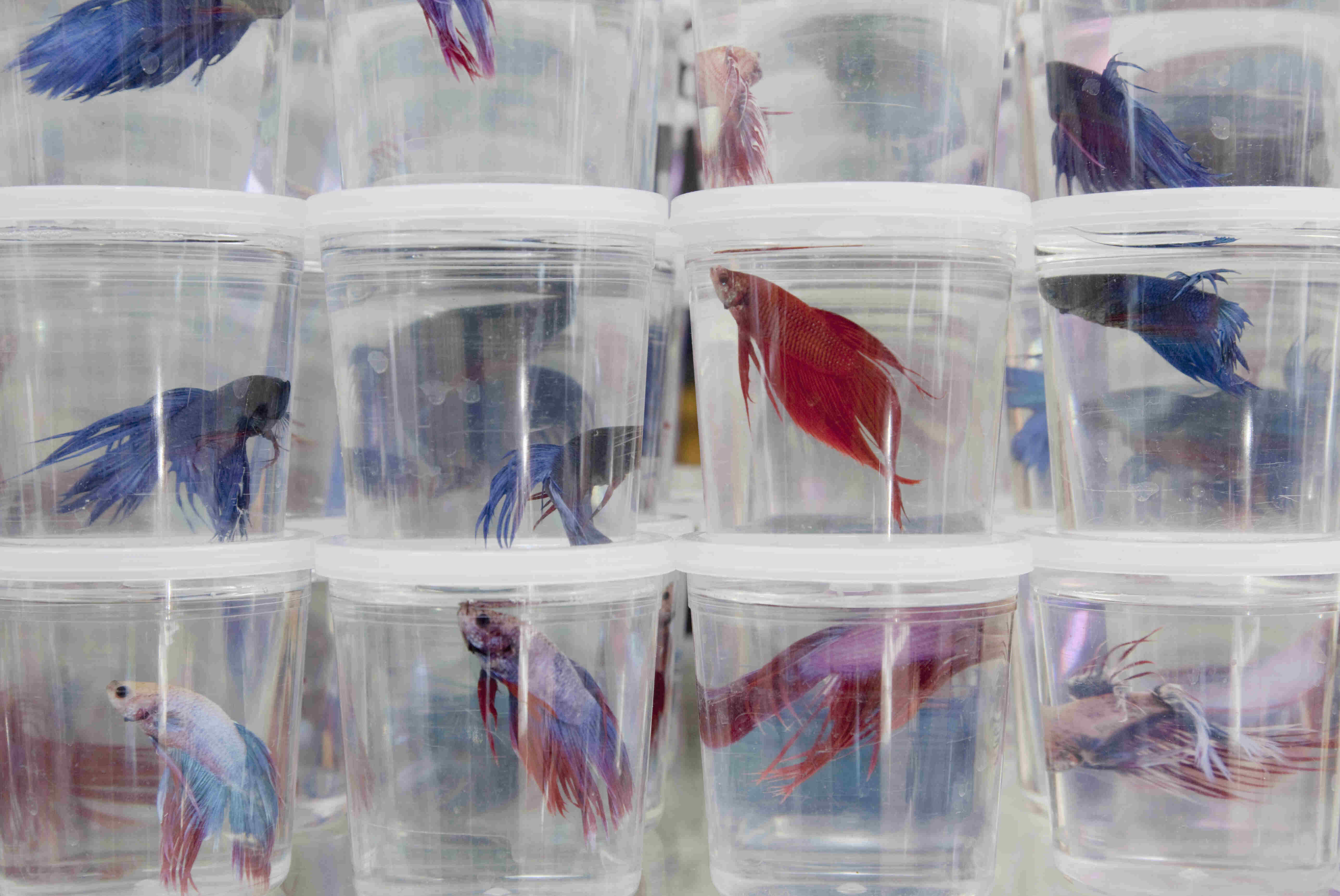
Betta fish are sold across the United States in major retail chains. Here’s what you need to know about Siamese fighting fish.
Throughout the United States, fishes are sold to be kept in indoor aquariums in people’s homes. One of the most popular fishes purchased in these stores is betta fish, better known as Siamese fighting fish.
Here are 10 facts you need to know about betta fish.
1. They usually live between two and five years in captivity.
While some betta fish, when properly cared for, can live to be nine years old, the average lifespan is between two and five years. Unfortunately, little information exists on how long they live in the wild.
2. Betta fish are very territorial.
While some male and female betta fish can live together with some docile species of fish, and female bettas live together in a sorority (with four to five more females), male betta fish are extremely territorial and will attack other males and females. This is why most betta fish are kept in solitary tanks.
In the wild, more than one male can live in a rice paddy as they’re quite large, allowing each male to have their own territory and leading to less fighting. This is how betta fish got the nickname Siamese fighting fish!

3. There are over 70 different species of bettas.
While most bettas you find in pet stores are the betta splendens species, specifically bred for their colors, fin appearance, and pattern, there are over 70 different types of betta!
4. Bettas originate from Southeast Asia.
These freshwater fish are native to Cambodia, Laos, Myanmar, Malaysia, Indonesia, Thailand, and Vietnam!
5. Betta fish are diurnal.
Like you and me, betta fish are active during the day and sleep at night. This means they need darkness to sleep and light (whether natural or artificial) to remain active during the day.

6. Male bettas are devoted fathers.
When mating, male betta fish blow a bubble nest to attract a female. Once they perform a mating ritual, the male takes the eggs, places them in the bubble nest, and scares off the female. He then fiercely protects the eggs from predators.
7. Betta fish are carnivores.
In nature, bettas eat mostly insects and insect larvae but also small crustaceans. They require food rich in protein, and their diets include brine shrimp, bloodworms, mosquito larvae, earthworms, and more.
8. Most bettas sold in the US come from Thai breeding farms.
Like many other breeding mills, such as dogs and cats, betta fish are most often bred in mills in Thailand and other Southeast Asian countries, where they’re usually kept in small bottles. Some, however, are still captured from the wild to this day. When they’re being transported, the fish are scooped into small plastic cups that you see them in at the pet store.

9. You can help bettas from a lifetime of suffering.
Betta fish don’t deserve to be bred in mills and suffer a lifetime of captivity in the homes of people uneducated in how to care for them. Most captive bettas live in flower vases across America, without the proper temperature or environmental settings to help them live comfortably.
You can help betta fish from a lifetime of suffering by never purchasing one as a pet and urging Petco and Petsmart to stop selling all animals. For help with advocating for a retail pet sale ban in your local community, download our free toolkit.